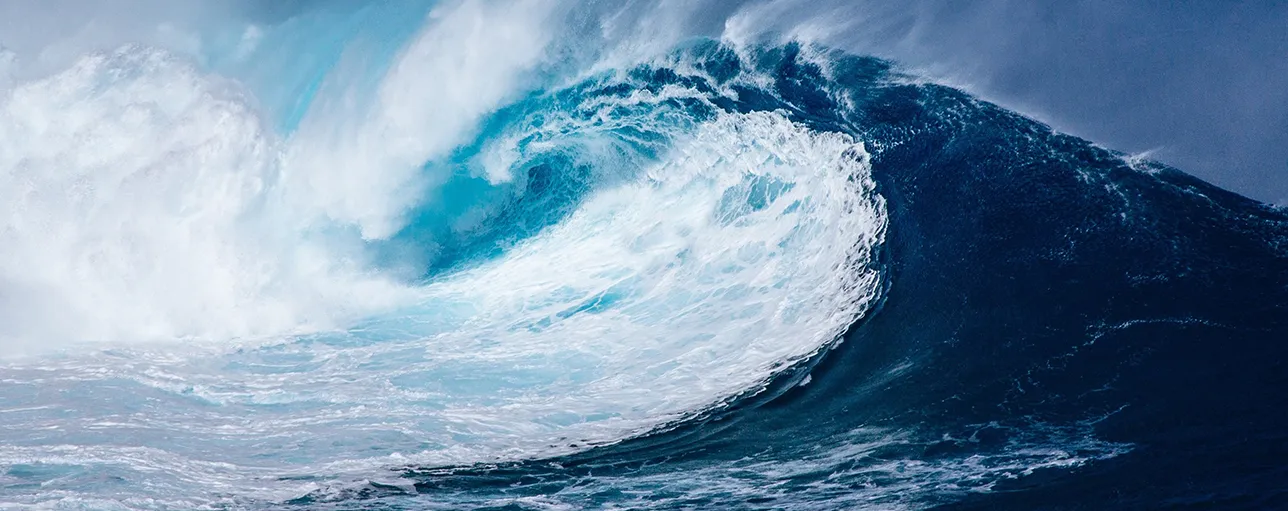Offshore wind’s massive technical and commercial growth in recent years has centred mainly on Northern Europe. But with the technology going increasingly global, the offshore wind industry is facing extreme conditions that it has never had to consider before.
Offshore in cyclone and earthquake zones
As offshore wind becomes more common in various parts of North America and Asia Pacific, developers must take into account the potential impact of earthquakes and tropical cyclones (also known as typhoons or hurricanes depending on location). What does it take to build an offshore wind farm in a site prone to such natural disasters?
Of course, where natural disasters are common, there is a great deal of expertise in and regulation around designing and constructing buildings to withstand them. But offshore wind farms are unlike other major construction projects in many ways.
For a start, local building codes are quite rightly usually focused on the safety of people inside and around the building. But with no people in and around offshore wind farms, many of these regulations are not relevant. Applying them directly would cause exorbitant costs, making offshore wind prohibitively expensive.
Unique challenges bring unknowns
For offshore wind in extreme weather conditions, we need to look at a different balance of safety and cost. Safety of investment becomes the critical factor. This is particularly important as offshore wind is increasingly seen as critical infrastructure and expected to deliver a major contribution to a reliable energy supply that can be recovered as soon as possible after a natural disaster. The questions we need to address are: what must a wind farm be able to withstand and at what point does prevention become more costly than failure?
While existing earthquake- or cyclone-zone construction expertise can provide some guidance, there are other reasons why it can’t be simply transferred. Firstly, with its tall tower and massive machine at the top, a wind turbine is a more dynamic and flexible structure than standard buildings. Secondly, offshore is a very different environment to onshore during an extreme event – and that isn’t reflected in current regulations. Cyclone windspeeds are considerably higher offshore, regularly exceeding those specified in local building codes. Meanwhile, the interaction between sediment and seawater during an undersea earthquake can lead to soil liquification and it isn’t clear what impact that has on a turbine’s foundations.
In short, there is a great deal of uncertainty on what impact extreme events will have on offshore wind farms and how we should design and build wind farms in areas where such events are likely. The industry is making steps forward. The (International Electrotechnical Commission) IEC has introduced a Typhoon Class (T Class) specification into its standard for wind turbines. However, while this is useful for evaluating an individual turbine’s ability to withstand extreme winds, it doesn’t provide any guidance at a project level. Currently, each project must address the uncertainties and find solutions on a case-by-case basis. And that adds further costs to each project.
Sharing expertise to reduce uncertainty
In the latter part of 2019, DNV brought together a consortium of industry leaders to address this issue. The Alleviating Cyclone and Earthquake Challenges for Wind Farms (ACE) joint industry project aims to define an agreed safety level for wind farms in extreme event zones that will provide a realistic expectation of reliability of supply at a sensible cost. To do that, it will condense and share existing knowledge from across the wind industry and beyond with the hope of creating a recommended practice that can be universally applied. Such a commonly accepted guideline would go a long way to supporting the further growth of offshore wind in new markets around the world.

